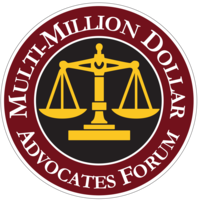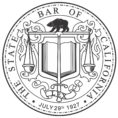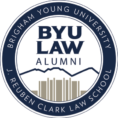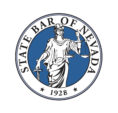The Role of Comparative Fault in California Motorcycle Accident Cases

After a motorcycle accident, victims may suffer many losses. Motorcycle riders often sustain significant injuries in crashes, along with financial losses and property damages.
Motorcycle accidents in California happen more often than you may think. According to California Highway Patrol SWITRS data, there were 12,544 motorcycle crashes where people were injured or died during 2022. With such a high risk of serious accidents, it is critical to prepare for the legal aftermath.
Did you know California uses comparative fault law to determine fault? This blog post will help you understand how comparative fault law works in motorcycle accident cases.
How Does Comparative Fault Law Work in California?
Section 1431 of the California Civil Code explains how shared responsibility plays out in a personal injury case. There are two main types of comparative fault systems, but California goes by pure comparative negligence.
California’s pure comparative fault laws allow all involved parties to seek compensation based on the percentage of fault each one shares. For example, even if you are 99 percent at fault for what happened, you can claim damages that equate to 1 percent.
This rule of pure comparative fault influences the amount of compensation you receive when you resolve a claim in California. For instance, compensation may be reduced by 30 percent when you are 30 percent responsible for an accident.
Generally, pure comparative negligence benefits motorcycle riders in California. In other states using contributory negligence, riders cannot recover damages if they are even partly at fault.
Advantages of the Pure Comparative Fault Law for Motorcyclists
California’s pure comparative fault law benefits personal injury claimants, making it easier for them to recover compensation.
This rule has some advantages:
- Partial financial recovery is possible under pure comparative negligence. Motorcyclists can still recover damages even if they are partially at fault.
- It encourages a fair distribution of blame. The comparative negligence system distributes damages according to each party’s degree of fault.
- It also promotes a fair case evaluation. This system recognizes that other factors, such as road conditions and other driver’s actions, may also play a role in accidents.
- This system even helps to reduce bias and prejudice. Motorcyclists may face biases or stereotypes, but this system acknowledges shared responsibility in accidents.
Factors That Influence Fault in a CA Motorcycle Accident
In California, determining negligence establishes which party bears the greatest responsibility for the accident. Drunk driving and disobeying traffic laws are some common forms of negligence.
To figure out how much each involved party is to blame, insurance adjusters and your attorney will conduct in-depth investigations of the accident. They will examine the following factors during this process.
Lane splitting
Lane splitting is when a motorcycle drives in between slow-moving or stopped cars, which is legal in California. However, questions of fault may arise in such a case.
Comparative fault considers the following and more:
- The rider’s speed
- The behavior of other drivers
- Both driver’s adherence to traffic laws
The other drivers’ actions will also be taken into consideration. For example, if a driver changes lanes without signaling, he could be at fault for the collision.
Use of helmets
In California, it is a legal requirement for motorcyclists to wear helmets. California’s helmet laws aim to protect motorcyclists’ safety.
However, when a motorcyclist neglects to wear a helmet, this does not automatically mean that the other involved parties are free from responsibility for the accident. That being said, wearing a helmet can help you preserve your rights to compensation.
Right-of-way disputes
When there is a disagreement about who had the right-of-way, comparative fault comes into play. It is a key factor in determining who is responsible.
Suppose a motorcyclist doesn’t give the right-of-way to another vehicle. At the same time, the other driver is not paying full attention.
Thus, if an accident occurs, both the motorcyclist and the other driver might share the blame. The percentage of fault will be split based on how each side contributed to the accident.
Intersection collisions
The seriousness of the other driver’s offense influences how much blame is assigned. Behaviors like running a red light, for example, can have an impact on who carries the most responsibility.
Speeding
Speeding is often a significant factor in motorcycle accidents. It must be determined whether or not the motorcyclist’s speed was reasonable for the conditions on the road.
A few factors are considered when determining whether the rider’s speed contributed to the collision, including:
- The weather at the time of the accident
- The vision of the rider or driver
- The amount of traffic
The main purpose is to understand what led to the accident and all contributing factors. The rule of pure comparative fault allows for compensation to be distributed fairly according to how much speed played a part in the accident.
Limited rider protection
Drivers and passengers are better protected inside an enclosed vehicle. Since a bike offers less physical protection to the rider, motorcyclists are more prone to injury. Thus, proving how the actions of other drivers contributed to the accident may become especially essential in receiving fair compensation that will cover the rider’s medical expenses.
Challenges with motorcycle riders’ visibility
Motorcyclists are not always easy to see on the road. The following factors can interfere with visibility:
- Rainy, foggy, or stormy weather
- The early morning, late evening, or nighttime
- The blind spots of larger vehicles, such as trucks and cars
- Gear that blends in with the surroundings
Fault may depend on whether the motorcycle rider made necessary efforts to maximize visibility to others. Using headlights and reflective gear are simple yet effective measures. These precautions contribute to the motorcyclist’s safety and may reduce liability.
Legal Considerations in California Motorcycle Accident Cases
Once you have decided to take legal action, you may run into some challenges. The legal system can be complex, involving many procedures and paperwork. There may be additional obstacles getting in the way of your successful personal injury case as well.
Such factors include:
- Gathering evidence
- Negotiating with opposing parties
- Dealing with court timelines
Building a strong legal case is dependent on convincing evidence. Highlighted below are five elements that can influence the pure comparative fault in your personal injury case.
Influence of police reports
While influential in determining fault, police reports are not conclusive. Errors or omissions may occur, so involved parties must review and, if necessary, correct inaccuracies.
Bias against motorcyclists
Motorcyclists often face prejudice that can influence fault determinations. There is a common misconception that riders are inherently risk-takers.
Bias against motorcyclists may lead to an unfair assessment of fault. Nevertheless, a skilled attorney can challenge such biases and present a clear picture of the accident.
Documentation of evidence
Thorough documentation of evidence is a crucial part of every personal injury claim. Documenting evidence includes collecting all necessary documents, both hardcopy and digital. Having enough convincing evidence against the other driver can reduce your comparative fault.
You, or your lawyer, should gather:
- Records of the other party’s traffic law violations
- Photographs and videos of the accident scene, road conditions, and relevant signage that provide a clear picture of the circumstances
- Official police reports, which can offer an unbiased account of the accident
- Medical records to establish the extent of your injuries
- Maintenance records that show how your motorcycle was properly maintained
- Reports on the weather and road conditions from the time of the accident
Insurance challenges
Comparative fault can present challenges when dealing with insurance companies. There are unfortunate stereotypes that surround motorcyclists. Many assume that all bikers are reckless and dangerous in the way they drive.
Biased adjusters may try to minimize compensation, perhaps by attributing a higher percentage of fault to the motorcyclist. Working with a skilled attorney, though, can protect the motorcyclist’s rights and ensure a fair assessment of comparative fault.
Eyewitness testimony
Eyewitness accounts can help determine the fault of each party in a motorcycle accident and provide valuable perspectives of the case. Courts may consider the credibility of eyewitness testimony when assessing comparative fault.
Expert witnesses
Expert witnesses may be especially necessary in complex cases. For instance, accident reconstruction specialists may be called to analyze the accident and clarify the sequence of events leading up to the collision. This helps determine the percentage of fault for each party.
How a Personal Injury Lawyer Can Help You
Determining comparative fault in motorcycle accidents requires the skills of a motorcycle accident lawyer. A skilled attorney with experience in California’s laws can help you navigate fault determination.
Other ways an attorney can assist you are by:
- Gathering evidence: A successful motorcycle accident claim hinges on the collection of robust evidence
- Evaluating your case: A lawyer can assess the details of your case to determine its strength and viability
- Investigating: Personal injury lawyers have the resources and experience needed to conduct thorough investigations
- Representing you legally: A lawyer well-versed in California law can build a solid case to ensure fair compensation
- Negotiating: A skilled attorney can negotiate effectively, counter the other party’s arguments, and get a fair settlement for the extent of the loss
- Understanding damages: Personal injury lawyers can assess the full extent of your damages, including medical expenses, lost wages, pain and suffering, and future costs
- Giving you peace of mind: Having a dedicated legal professional by your side can provide peace of mind during this challenging time
Contact Our Motorcycle Accident Attorneys to Schedule a Free Case Evaluation
If you have suffered injuries in a California motorcycle accident, don’t hesitate to reach out to Harker Injury Law. Our dedicated motorcycle accident attorneys are ready to guide you through the legal process until completion.
At Harker Injury Law, we understand the challenges faced by motorcycle accident victims. We do not let bias get in the way of the justice you deserve. Rather, we can leverage our extensive resources and experience to minimize your share of comparative fault.
Over the years, our commitment to client advocacy has resulted in securing over $1 million in compensation for our clients. All this was made financially possible for each of them by our contingency fee, which ensures that you only pay us if we successfully win your case.
You can schedule a free case evaluation with our experienced team to gain a better understanding of your legal options. Fill out the contact form today to take the first step towards seeking the compensation you deserve after a motorcycle accident.










